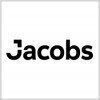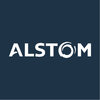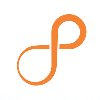Filter interviews by
Idom Hydraulic Engineer Interview Questions and Answers
Idom Hydraulic Engineer Interview Experiences
1 interview found
I was interviewed in Jan 2024.
(2 Questions)
- Q1. Design of water resources & waste water system.
- Ans.
Designing water resources & waste water systems involves planning, analyzing, and implementing infrastructure to manage water supply and waste disposal.
Conducting site surveys to assess water availability and waste water disposal needs
Designing pipelines, pumps, and treatment facilities to transport and treat water and waste water
Ensuring compliance with environmental regulations and sustainability practices
Collaborati...
- Q2. Drawing review of water resources system.
- Ans.
Reviewing drawings of water resources systems involves analyzing plans, layouts, and specifications to ensure proper design and functionality.
Examine drawings for accuracy and compliance with regulations
Check dimensions, materials, and equipment specified in the plans
Verify that the system design meets the project requirements
Identify any potential issues or conflicts in the drawings
Collaborate with other engineers and
Top trending discussions






Interview questions from similar companies

(2 Questions)
- Q1. Tell me your self
- Q2. Why YOU want to change from your company

(1 Question)
- Q1. Basic questions, most were of GATE level.
(3 Questions)
- Q1. Line sizing of the fluids.
- Ans.
Line sizing of fluids is crucial for efficient process operation and safety.
Line sizing is determined based on the flow rate, pressure drop, and fluid properties.
Proper line sizing ensures optimal flow velocity to prevent erosion and corrosion.
Consider factors like viscosity, density, and temperature when sizing lines.
Use industry standards and guidelines for accurate line sizing calculations.
Examples: API 14E for oil ...
- Q2. Pumps and its types, cavitation.
- Ans.
Pumps are devices used to move fluids. Types include centrifugal, positive displacement, and submersible. Cavitation is the formation of vapor bubbles in a liquid due to low pressure.
Pumps are used to move fluids in various industrial processes.
Types of pumps include centrifugal, positive displacement, and submersible.
Cavitation occurs when the pressure in a liquid drops below its vapor pressure, leading to the formati...
- Q3. Internship and major project.
(1 Question)
- Q1. Tell me about yourself?

I applied via Company Website and was interviewed in Aug 2023. There was 1 interview round.
(2 Questions)
- Q1. About the work experience
- Q2. Anout the projects

I applied via LinkedIn and was interviewed in Feb 2023. There were 2 interview rounds.

(2 Questions)
- Q1. P&ID, NPSH, Pump Hydraulics, DPDT
- Q2. Control Valve hydraulics
Interview Preparation Tips

I applied via Referral and was interviewed before Feb 2023. There were 2 interview rounds.
(1 Question)
- Q1. Line sizing criteria
- Ans.
Line sizing criteria is based on factors like flow rate, pressure drop, velocity, and material compatibility.
Consider the flow rate of the fluid being transported
Calculate the pressure drop allowed in the system
Determine the velocity of the fluid to prevent erosion or corrosion
Ensure the material of the line is compatible with the fluid being transported
(1 Question)
- Q1. Salary expectation

Process Engineer Interview Questions & Answers
Jacobs Engineering Groupposted on 10 May 2022

(1 Question)
- Q1. How to make p&ID and perform line Sizing
- Ans.
P&ID is made by identifying process equipment and connecting them with pipes. Line sizing is done based on process requirements.
Identify process equipment and their connections
Determine process requirements such as flow rate and pressure drop
Select appropriate pipe size based on process requirements
Consider factors such as fluid properties, pipe material, and layout
Use software tools such as AutoCAD or SmartPlant P&ID
Interview Preparation Tips

Process Engineer Interview Questions & Answers
Alstom Transportationposted on 17 Oct 2022
I applied via Approached by Company and was interviewed before Oct 2021. There were 3 interview rounds.

(5 Questions)
- Q1. Scope of work taken up in earlier company which are applicable for our company ( Alstom)
- Q2. Manufacturing & calibration related topics for Carbody fixture
- Q3. Paint RAL code & paint thickness applied on fixture.
- Ans.
The paint RAL code and thickness applied on the fixture is recorded for quality control purposes.
The RAL code is a standardized color code system used in Europe.
The paint thickness is measured using a paint thickness gauge.
The recorded data is used to ensure consistency in the painting process and to meet customer specifications.
Example: RAL 9005 (Jet Black) with a paint thickness of 50 microns.
- Q4. Make of clamps used on fixture
- Ans.
The clamps used on the fixture are made by various manufacturers.
The make of clamps used on the fixture may vary depending on the specific fixture and its requirements.
Some common manufacturers of clamps include Bessey, Irwin, and Jorgensen.
The type of clamp used may also vary, such as C-clamps, bar clamps, or spring clamps.
- Q5. What is VSM graph and it's application
- Ans.
VSM graph is a tool used in Lean manufacturing to map out the current state of a process and identify areas for improvement.
VSM stands for Value Stream Mapping
It is used to visualize the flow of materials and information through a process
Helps identify waste and inefficiencies in the process
Can be used to plan and implement process improvements
Example: A VSM graph can be used to identify bottlenecks in a manufacturing ...
(2 Questions)
- Q1. What challenges you feel you might face of you join madhepura ( it's a remote site hence the question)
- Q2. Why do you think you are suitable for the job and how your earlier experience will be useful forus ( Alstom)
Interview Preparation Tips
- Rolling stock
- On going project
- News related to product and company
Imagining you are friends with interviewer since many years and discussion is just a knowledge sharing activity. This will help in reducing anxiety
Skills evaluated in this interview


(2 Questions)
- Q1. PSV types and their selection
- Ans.
Different types of Pressure Safety Valves (PSVs) and factors to consider when selecting them
Types of PSVs include conventional, balanced bellows, pilot-operated, and rupture disc
Factors to consider when selecting a PSV include set pressure, relieving capacity, back pressure, and operating temperature
Conventional PSVs are commonly used for low to medium pressure applications, while pilot-operated PSVs are suitable for h...
- Q2. P&IDS, PFDS, HMB, SIMULATION

Senior Instrument Engineer Interview Questions & Answers
Samsung E&Aposted on 26 Jul 2023

(1 Question)
- Q1. Basic Instrumentation Engineering Question like Flow, Level, Temperature, Pressure, Control Valve etc
(1 Question)
- Q1. Basic Introduction and ask about professional journey
Interview Preparation Tips
Idom Interview FAQs
Tell us how to improve this page.
Idom Interviews By Designations
- Idom Piping Stress Engineer Interview Questions
- Idom Design Engineer Interview Questions
- Idom Electrical Engineer Interview Questions
- Idom General Instrumentation Engineer Trainee Interview Questions
- Idom Hydraulic Engineer Interview Questions
- Idom Senior Geotechnical Engineer Interview Questions
- Idom Tekla Designer Interview Questions
Interview Questions for Popular Designations
- Hydraulic Technician Interview Questions
- Hydraulic Mechanic Interview Questions
- Hydraulic Design Engineer Interview Questions
- Process Engineer Interview Questions
- Graduate Apprentice Trainee Interview Questions
- Senior Instrument Engineer Interview Questions
- Electronics and Electrical Engineer Interview Questions
- Calibration Engineer Interview Questions
- Show more
Interview Questions from Similar Companies
|
Piping Designer
55
salaries
| ₹5 L/yr - ₹15.2 L/yr |
|
Structural Engineer
14
salaries
| ₹6.6 L/yr - ₹25.5 L/yr |
|
Electrical Engineer
14
salaries
| ₹8 L/yr - ₹14 L/yr |
|
Piping Engineer
14
salaries
| ₹8.6 L/yr - ₹20 L/yr |
|
Civil Structural Engineer
12
salaries
| ₹6.5 L/yr - ₹16.5 L/yr |

L&T Technology Services

TCS

Wipro

Infosys
Calculate your in-hand salary
- Home >
- Interviews >
- Idom Interview Questions >
- Idom Hydraulic Engineer Interview Questions






